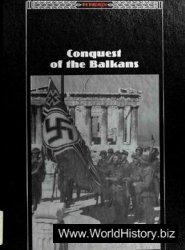Parallel to the events in Mishmar Haemek, the first major Haganah operation was being mounted. The situation in Jerusalem had become desperate. The Arab siege had been intensified and food supplies in Jerusalem were running out. The city was dependent on water supplies from the coastal plain, and the pumping stations were especially vulnerable. It became evident that only a major operation could open the road to Jerusalem, but it was an operation that had to be undertaken. Failure in the Jerusalem sector would be fatal to the Jewish struggle. Despite the scepticism and opposition of many members of his staff, Ben-Gurion insisted on what was for the Haganah an operation of a scope and size hitherto unknown. Until that date, Haganah activities had never been much above those of company level; no battalion-size operation had been undertaken. Ben-Gurion now insisted on a brigade-size operation — which would mean draining manpower from many parts of the country, concentrating arms and leaving several fronts open to Arab attack.
The plan. Operation ‘Nachshon’,** called for the opening of a corridor some six miles wide in the coastal plain and some two miles wide in the mountains. It would be secured by the occupation of high ground and Arab villages bordering the road, so that convoys would be free to move back and forth on the main route. For this purpose, a brigade force was organized, numbering about 1,500 men in three battalions. One battalion was to be responsible for the area between Hulda and Latrun on the coastal plain; a second would take care of the area from Latrun to Kiryat Anavim (the mountainous ascent to an area some ten miles from Jerusalem); the third battalion would remain in reserve. Command of the
* An Arabic-speaking national religious community. The Druze religion originated in the 11th century in the Isma’iliyya (an extreme branch of Shi’i Islam), but is considered by most as having seceded from Islam. It is a secret cult, its tenets being known fully to the religious heads of the community alone. The Druze stress moral and social principles rather than ritual or ceremony. Altogether, there are currently some 350,000 Druze in Syria, Lebanon and Israel: about 180,000 in Syria, or about 3 per cent of the population; some 150,000 in Lebanon, or 3.6 per cent of the total population; and 33,000 in Israel, or 1 per cent of the population. This bitter battle brought to an end the Druze participation in the war on the Arab side; Druze forces were later to be a very loyal element in the Israel Defence Forces. ** Called after Nachshon Ben-Aminadav, the head of the tribe of Judah during the exodus from Egypt, who was reputed to have been the first to have dived into the Red Sea as Moses parted it for the passage of the children of Israel. He thus served as an example and an inspiration to those who followed.

Operation 'Nachshon' (Western Sector), 3-15 April 1948
Operation would go to Shimon Avidan, commander of the ‘Givati’ Brigade (and later to become a brigadier-general).
By a fortuitous set of circumstances, the first shipment of arms from Czechoslovakia was smuggled into the country on the night of 1 April at Beit Daras, a secret airstrip in the south. The arms predicament of the Haganah at the time is emphasized by the fact that the 200 rifles and 40 light machine-guns that were unloaded from the aircraft constituted a major improvement in the Haganah’s arms situation. Two days later, the first ship arrived with Czech rifles and light machine-guns. These were surreptitiously unloaded and distributed, frequently before the grease had been removed, to the units in the field.
Two very important actions preceded Operation ‘Nachshon’. First, in the area of Ramie, a Haganah commando unit blew up the headquarters of Hassan Salameh, area commander of the Mufti’s Army of Salvation. Many of Salameh’s key personnel died in the attack, and the ability of his force to disrupt the Haganah preparations on the coastal plain was severely impeded. Second, an Arab village near Jerusalem, Kastel, built on the site of a Roman fortress dominating the road between Jerusalem and Kiryat Anavim, was captured. Operation ‘Nachshon’ itself began on the evening of 5 April. Blocking units moved out to cover seven Arab villages, while larger forces captured the villages of Arab Hulda and Deir Muheisin in the general area of Latrun. At the same time, the Palmach attacked the village of Beit Machsir on the high ground in the area of Bab el Wad, the opening in the mountains where the road winds up to Jerusalem. At midnight, 60 trucks loaded with civilian and military supplies left Hulda and, moving slowly to Jerusalem past the forces fighting for control of the hills, reached the capital city after a ten-hour drive. The Arabs counterattacked on the night of 7/8 April, their main thrust being in the area of Motza below Kastel. Abd el Kader el-Husseini had rushed back from Damascus, where he had been mobilizing financial support and
Acquiring additional weapons, and he now led the attack on Kastel, which changed hands in fierce struggles a number of times. After six days of continuous fighting without relief or rest, the remnants of the Jewish forces were finally forced back with only one commander, a section leader, alive. But, at the last moment, the situation was dramatically reversed. Abd el Kader el-Husseini was himself killed as he approached a position he thought had already been taken by Arab forces. Demoralized, the Arabs fell back. Next day, a counterattacking unit of the Palmach found Kastel unoccupied, and supplies could be moved into Jerusalem.
The success of Operation ‘Nachshon’ was important for a number of reasons. The supplies that arrived in the city enabled the beleaguered garrison and population to hold out for another two months. From a military point of view. Operation ‘Nachshon’ was the first in which a Jewish force of formation level had been activated. It was the first time in which the Haganah had attacked for the purpose of taking control of territory. The operation itself had a major psychological effect on the Arab forces, the results of which would be seen in the coming weeks of fighting. But, above all, the operation prepared the way for the implementation of what the Haganah called ‘Plan D’ — the seizure of strategic points that might influence battles along the axes of the impending Arab invasion.
The relief of Jerusalem was short-lived, however. Two large convoys of supplies and reinforcements reached Jerusalem within the framework of Operation ‘Nachshon’ and, by 20 April, three further such convoys had helped to improve the situation in the city and had brought up the Palmach ‘Hard’ Brigade. But 20 April saw a halt to this flow of men and supplies: only part of a convoy managed to reach the city, while the rear end was obliged to turn back. The road to Jerusalem was once again sealed off in the area of Bab el Wad. The siege of Jerusalem had commenced.
While Operation ‘Nachshon’ was being carried out, one of the more controversial episodes in the war took place. An attack was mounted by an Irgun unit with members of Lehi on the Arab village of Deir Yassin, on the western edge of Jerusalem. In the course of the fighting, over 200 of the villagers were reported to have been killed. There have been numerous conflicting reports about the attack on Deir Yassin. Certainly, it became a weapon in the hands of the Arabs over the years in their attacks on Israel, and the words ‘Deir Yassin’ were used over and over again by the Arabs to justify their own atrocities. The Irgun version maintains that they called on the village to surrender, but that when fire was opened on them, inflicting casualties, they found themselves involved in a military attack. The Jewish Agency and the Haganah High Command immediately expressed their deep disgust and regret.
During the month of April 1948, the pendulum had swung in favour of the Haganah. In two major actions, the Haganah had activated forces larger than any before — a brigade group in Operation ‘Nachshon’ and forces equivalent to two battalions at Mishmar Haemek. In both these operations, the Jewish forces had been successful. The adverse effect on the morale of the Arab forces was considerable.




 World History
World History









